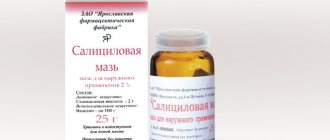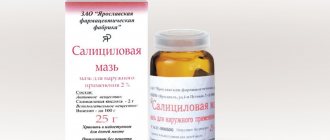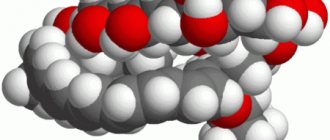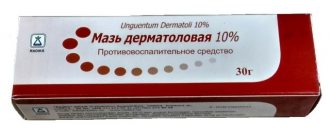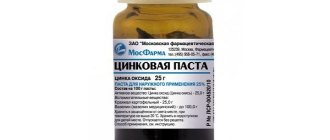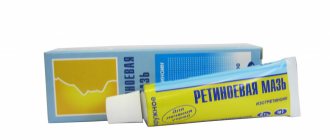Zinc ointment is one of the best remedies in the fight against diaper rash, excessive sweating and acne. It provides the necessary skin care, disinfecting and protecting from external adverse factors. The low price makes it accessible to consumers, and the low percentage of allergic reactions gives it the right to be called safe for babies.
How to use zinc ointment
Zinc ointment is used in pediatrics as a protective agent against diaper rash. In addition, it is recommended to lubricate the baby's delicate skin under the diaper every time after bathing. Zinc creates a reliable barrier that protects children's skin from constant contact with urine and loose stool. By applying zinc ointment to the buttocks daily, you can protect your baby from diaper dermatitis.
The disinfecting effect of the drug is used when treating wounds. By applying the composition to abrasions, you can avoid infection, prevent acidification of the damaged surface, and speed up the process of skin regeneration.
The main indications are:
- diaper rash;
- scratches;
- dermatitis;
- eczema;
- cuts.
In addition, zinc ointment is used to care for the elderly and immobile patients. Treatment of bedsores slows down their spread and disinfects, which eliminates the risk of secondary infections.
Instructions for use for burns
For boiling water (thermal) burns, it is recommended to smear the problem areas with zinc ointment 2 to 3 times daily. In certain cases, the frequency of treatment of affected skin areas is increased to 6 times a day, but only as prescribed by a doctor. The duration of therapy is determined by the degree of damage. The duration of treatment is until tissue integrity is completely restored and the wound heals. This process often takes from 5 to 20 days.
To remove zinc ointment from the surface of the epidermis, it is better to use tar soap, since this is problematic to do with ordinary detergents. Dry and flaky skin is treated with glycerin soap.
Indications and contraindications
Despite the safety of the drug in question, its use is coordinated with the attending physician. The use of anti-burn medications without a doctor's prescription may be unsafe for the patient's health.
The drug is prescribed for the following dermatological pathologies:
- chemical and thermal burns of the 1st degree;
- bedsores;
- dermatitis and diaper rash in young children;
- streptoderma;
- acne and pimples (zinc ointment is indicated only for patients with non-oily skin type);
- trophic ulcerative lesions;
- abrasions and wounds of various etiologies.
If first aid is provided in a timely manner, the drug relieves the patient of severe painful sensations and eliminates the likelihood of infection of the problem area of the skin and subsequent spread of infection.
The drug is contraindicated in patients with severe purulent lesions, allergies to the components of the composition, as well as severe thermal damage to the skin.
Directions for use and doses
The unique properties of the drug make it possible to use zinc ointment for burns of various etiologies. Let's look at the most common skin injuries.
- Boiling water (thermal) is one of the most common cases of household injuries. The medication must be applied to the burn as quickly as possible in order to eliminate the risk of blistering and the development of inflammatory reactions. To ensure maximum therapeutic effect, a sterile dressing may be applied. Apply once every 24 hours.
- Ultraviolet radiation (thermal) – children and adults with delicate skin are primarily at risk. Zinc ointment not only forms a protective layer on the affected epidermis, but also actively absorbs ultraviolet radiation. The medicine is applied 4 to 6 times a day until complete cure.
- Acid and powder (chemical) - the use of zinc ointment is indicated only for small lesions, and only after removal of the chemical agent (phosphorus, kerosene, gasoline, bitumen). It is important to contact a dermatologist or traumatologist to provide comprehensive anti-burn therapy.
The drug in question is effective in the treatment of burns and associated wounds of the 1st degree, when the patient is sufficiently at home.
Side effects and special instructions
The medication is exceptionally tolerable; in most cases, its use is not accompanied by any unpleasant sensations. In rare cases, the following allergic reactions may occur and manifest themselves:
- moderate itching;
- redness of the epidermis in the area of drug treatment;
- rash;
- burning.
In these cases, it is better to avoid using zinc ointment and replace it with a drug with a similar mechanism of action. Dermatologists recommend adhering to the following special instructions:
- in case of a facial burn, apply the composition exclusively to clean skin;
- the pharmaceutical product is successfully used in anti-burn therapy for children aged 5 to 12 years, under medical supervision;
- The medication can be used during lactation and while carrying a child.
For young children, it is safer to use specialized medications prescribed by a pediatrician.
We recommend
Choosing the best ointment for burns. First aid, recommendations for skin care after a burn.
How does zinc ointment work on acne?
Use in cosmetology has shown its effectiveness against acne. Skin rashes caused by excessive secretion from the sebaceous glands may disappear if zinc ointment is used correctly:
- Cleanse skin of makeup and impurities.
- Wipe skin dry.
- Apply zinc ointment to the area affected by acne.
- Leave overnight.
Zinc will dry out areas of the skin and prevent the sebaceous glands from producing sebum.
Reviews
Sofia, 32 years old, Moscow
I used zinc cream only 2 times and it didn’t suit me because it dries out my skin too much. It is safer for a child to use Bepanten Children's or Tyrosur. These drugs cope not only with burns, but also abrasions and scratches. I had to treat the skin on the child’s shoulders only once, on the first day of vacation at sea. It eliminates inflammation quickly, and there is no trace of pain left. I think zinc ointments are better for adults.
Valery, 43 years old, Stavropol
While relaxing at the dacha, I inadvertently spilled 10 liters of boiling water on my right leg. I thought the skin would fall off right there. The wife quickly provided first aid, fortunately it turned out that the scalded area was small. The wound was treated with zinc ointment. On the first day it was almost impossible to sleep, but by the end of the 2nd day the pain went away. No blisters developed on my leg. A truly effective and inexpensive anti-burn product.
Do I need to wash off zinc ointment from my face?
The constant presence of zinc on the skin of the face can lead to dryness and flaking. However, this depends on the individual characteristics of the sebaceous glands. If pathological activity is noted, the zinc ointment may not be washed off, but in this case there is no need to apply foundation and other cosmetics on top of it: firstly, this will clog the pores, and secondly, the compositions of some products may react with zinc, which may lead to chemical reactions between components.
If the ointment is not washed off during the day, be sure to cleanse the skin by washing before the next application. Otherwise, the accumulation of daytime dust in the pores with ointment residues can give rise to a new skin problem.
Analogues of the drug
If you cannot smear the damaged epidermis with zinc oxide for some reason, you can replace it with an analogue. Generics are available in different dosage forms and are sold without a prescription.
| Crema | Ointments | Suspensions | Pastes |
| Desitin | Sulfur-zinc | Tsindol | Zinc, 25% |
| Diaderm | Salicylic-zinc | ||
| Sudocrem |
Analogues differ in composition and state of aggregation, but the active substance is the same. During pregnancy, chickenpox, herpes, severe burns, infancy, acute psoriasis or eczema, zinc ointment and its analogues are used only as recommended or after consultation with a doctor.
Contraindications
The ointment is not used to treat skin diseases in patients prone to allergic reactions to the components of the drug.
Zinc ointment is not applied to the mucous membranes of the mouth. Once zinc enters the bloodstream through the esophagus, it can cause poisoning, which can lead to convulsions, allergic skin reactions, nausea, vomiting and dizziness. Exceptions may be the mucous membranes of the anal ring and foreskin, where the ointment can be applied to relieve the inflammatory process, accelerate the healing of cracks and disinfect the surface.
Indications and contraindications for use
The product is dispensed without a doctor's prescription. It is used by independent decision for non-dangerous pathologies and according to medical recommendations. The cream is used for a wide range of diseases and has almost no contraindications.
Indications
Among the indications for the use of zinc ointment:
- all types of dermatitis (including in children);
- eczema;
- diaper rash;
- bedsores;
- allergy rashes;
- psoriasis;
- herpes;
- acne;
- burns;
- small cuts or wounds.
Sometimes it is used in cosmetology. Most often, to combat acne locally, acne scars. Cosmetologists are against the use of cream to combat wrinkles or age spots.
Contraindications
In most cases, zinc ointment is safe. Cannot be used in cases:
- on mucous membranes if they are inflamed;
- increased dryness of the epidermis;
- skin problems, frequent formation of acne and blackheads.
People with individual intolerance to zinc or petroleum jelly are also not recommended to apply it. In rare cases, allergy sufferers may experience a reaction to the drug.
How to use zinc ointment for sweat
Excessive sweating is a problem that zinc ointment helps combat. Violation of the function of thermoregulation leads to excessive production of sweat by the glands, due to which the body tries to reduce body temperature. Zinc ointment does not affect the center of thermoregulation, however, it can reduce the activity of the sweat glands, thereby reducing the amount of sweat produced.
It should be noted that the sweat produced by humans is odorless. The waste products of bacteria that multiply in the armpits, which contain a favorable environment for the proliferation of microorganisms, smell. Zinc ointment, having an antiseptic effect, reduces the rate of bacterial growth, thereby eliminating unpleasant odors.
Adverse reactions
The zinc preparation is contraindicated in people with hypersensitivity to zinc oxide. With deep damage to the skin, it causes adverse reactions, so it is not used for serious injuries. Possible undesirable effects include:
- skin redness;
- moderate to severe itching;
- skin rashes;
- peeling of the epidermis.
Accidental ingestion of the medicine can cause disruption of the central nervous system. If you swallow a large dose of Zinc paste or ointment, it will lead to:
- uncontrollable vomiting;
- muscle cramps;
- confusion;
- nervous overexcitation;
- diarrhea;
- dehydration;
- tachycardia.
Sometimes even properly used Zinc ointment for a burn causes contact dermatitis. It manifests itself as itching, pale pink spots on the body. Visually, they resemble the rashes that form when stung by nettles. If undesirable symptoms appear, you should stop using medications that contain zinc oxide. To make you feel better, take antiallergic medications - Erius, Clemastine, Tavegil, Suprastin, etc.
Price in pharmacy
How much Zinc ointment costs is of interest to many. There is no exact price for it and it all depends on the manufacturer and point of sale.
The average cost in Russian pharmacies ranges from 18 to 40 rubles per tube of 25-30 g. The lowest price is for the drug produced by Samaramedprom.
You can buy it cheaper on the Internet, but it is important to use certified sites and online pharmacies so as not to fall for the tricks of scammers.
special instructions
Zinc paste is approved for the treatment of superficial burns during pregnancy. Zinc oxide does not cross the placental barrier and is practically not absorbed into the general bloodstream. Even with systematic use, the medicine does not harm the fetus or the expectant mother.
The antiseptic is used in pediatric practice. But dermatologists do not recommend treating burns in children under 1 year with Zinc ointment or paste. Patients in this group often experience allergic reactions due to increased skin sensitivity to zinc.
Avoid getting the zinc mixture into your eyes. In case of damage to the conjunctiva, rinse the mucous membrane with running water. If there is redness of the eyes, photophobia and watery eyes, consult an ophthalmologist.
If the tissue does not heal within 4-5 days after the start of treatment for burns, you need to stop therapy and consult a specialist. Non-healing burns indicate infection has entered the wound.
Treatment of dermatitis
Treatment of dermatitis is a whole range of measures, including therapeutic and physiotherapeutic procedures with the prescription of general and local medications (creams, ointments). The main goal of therapy is to eliminate disturbing symptoms (itching, burning, rashes) and prevent secondary infections. Overall success in treatment is possible only with strict adherence to medical recommendations.
Dermatitis must be treated individually in each specific case. Sometimes it is enough to eliminate contact with the irritant. In difficult cases, drug therapy is selected with the prescription of local agents and antihistamines.[3]
Types of dermatitis and diagnosis
Depending on the causes of manifestation and the nature of the course, the following types of dermatitis are distinguished:
- simple contact;
- allergic;
- allergic contact;
- seborrheic;
- atopic.[1]
Diagnosis of dermatitis is based on examination of the patient and laboratory tests, including a general blood and urine test, a biochemical blood test, an immunological blood test to determine the level of Ig E, which makes it possible to determine the allergic nature of the disease, and allergy skin tests. Based on the research results, the doctor will be able to assess the picture of the disease and select an effective treatment regimen. In some cases, allergists, infectious disease specialists, and immunologists are invited for consultation.[2]
How to identify a spoiled drug
In order to identify a spoiled product, first of all, you need to look at its expiration date . After all, even if visually the ointment has the correct consistency and color, but the expiration date has expired, then it can no longer be used. This is due to the fact that side effects appear at this time. Most often, such adverse consequences are a variety of allergic reactions, diagnosed through the detection of skin rashes and itching.
You can visually determine the unsuitability of a medicine by its appearance . For example, this is obvious when the color darkens. In addition, an important sign of deterioration of the drug is the separation of its consistency: when the more liquid part flows out first. It is also possible that the smell may change to a stronger one.
If such signs appear, the ointment should under no circumstances be used for medicinal purposes and must be discarded.


